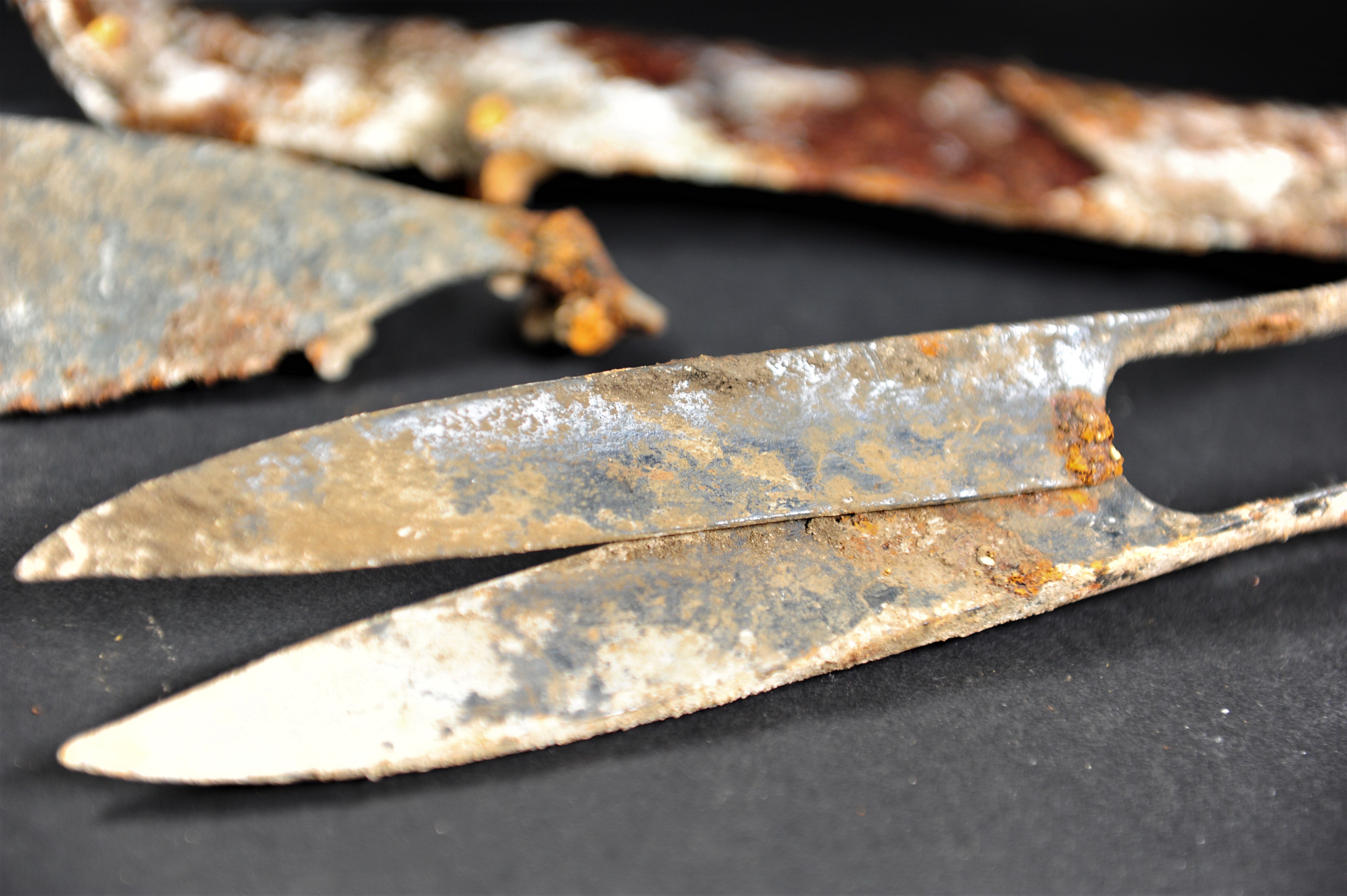German archaeologists have discovered a spectacular pair of ancient scissors while investigating a construction site in Munich. The scissors are exceptionally well preserved and can still cut.
Archaeologists from the Bavarian State Office for the Preservation of Monuments (BLfD) were originally called in by a bomb disposal team who were searching a construction site in Sendling, a suburb in Munich, for unexploded World War Two ordnances. This was a standard precautionary practice, but in their search, the disposal team stumbled on a buried wooden structure that turned out to be a cremation tomb that dates to the third or second century BCE. This was a period when the Celts would have burned their dead before burying their remains and their possessions in pits.
The Celts were an early Indo-European people who spread across most of Western Europe. Made up of disparate tribes and groups, these people ranged from the British Isles to northern Spain. They even made it as far east as modern Transylvania and the Black Sea. In many instances, these different peoples were absorbed into the Roman Empire and became what we would call the Britons, Gauls, Boii, Galatians, and Celtiberians.

The scissors are in immaculate condition for how old they are. Image credit: BLfD
The Celts displayed a clear belief in the afterlife and had a range of burial practices, but because they did not produce written records, we are left to infer much about their beliefs through either second-hand accounts or from what they left behind. This is why the grave site in Munich is so exciting.
The BLfD team recovered a range of objects, including a folded sword, the remains of a shield, the tip of a spear, a razor, and a human fibula.
The researchers think the sword was heated before it was folded; this would have rendered it useless for combat. There are several explanations for why this was done. Firstly, the sword may have been bent to discourage looters from disturbing the grave – what use is a bent sword, after all? Alternatively, the sword’s destruction may have served symbolic purposes (ritualistically “killing” the blade), allowing its deceased owner to carry on wielding it in the afterlife. Finally, it could be evidence of a superstitious precaution against revenants (the rising dead). But the star of this show is most certainly the scissors that accompanied these objects.
These scissors are so well preserved that they were described as “almost new, with a slight sheen”. Much as they are today, the ancient scissors were multipurpose tools that could have been used to cut hair or textiles, or to sheer livestock.
Professor Mathias Pfeil, head of the BLfD, regards the discovery as “a special find”. He explained in a statement that not only do the scissors display impressive craftmanship, but their remarkable preservation also “provides fascinating glimpses into our past”. According to Professor Pfeil, the scissors are around 2,300 years old and “could still be used today”.
Source Link: 2,300-Year-Old Scissors Discovered In Celtic Grave – And They're Still Sharp